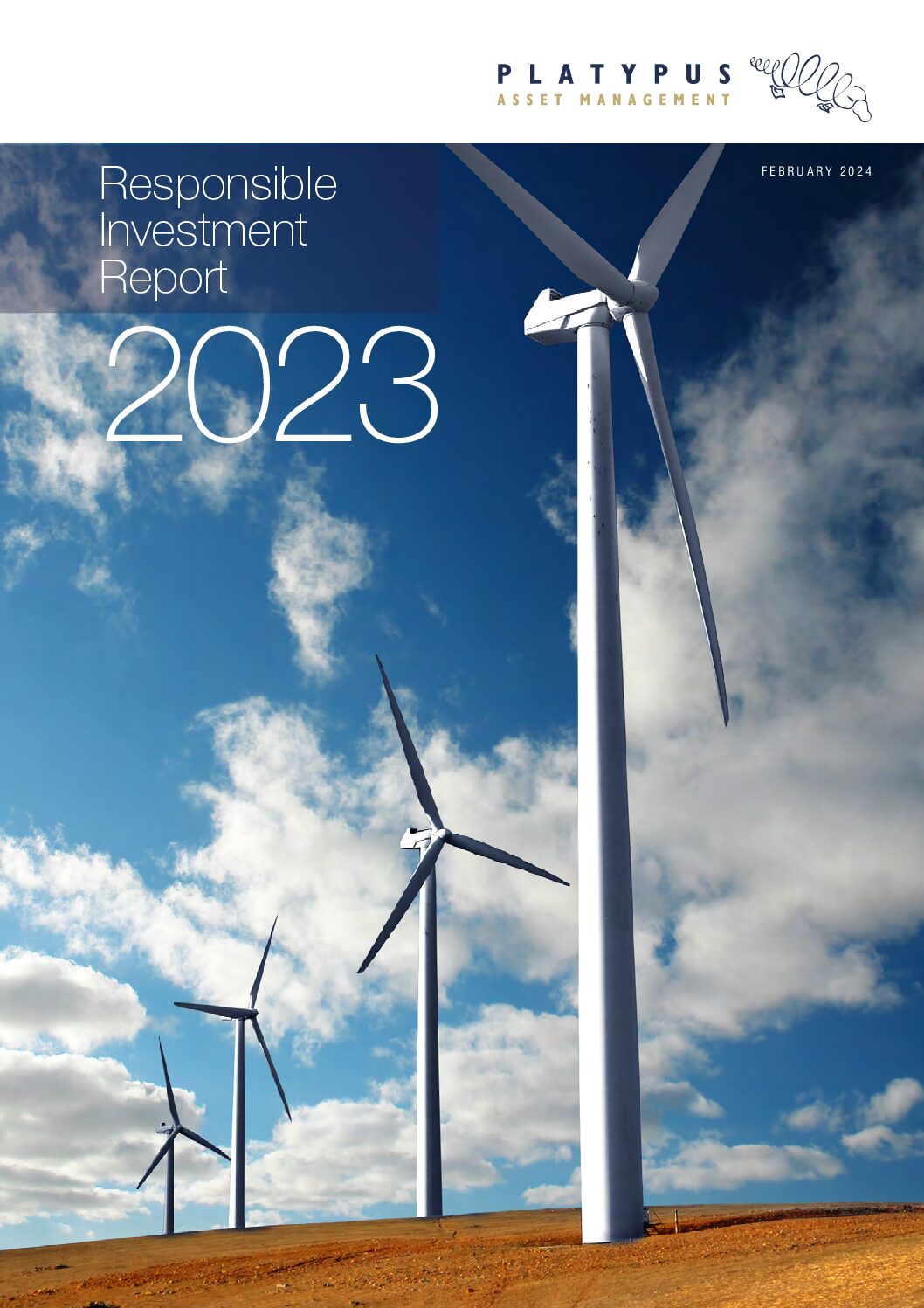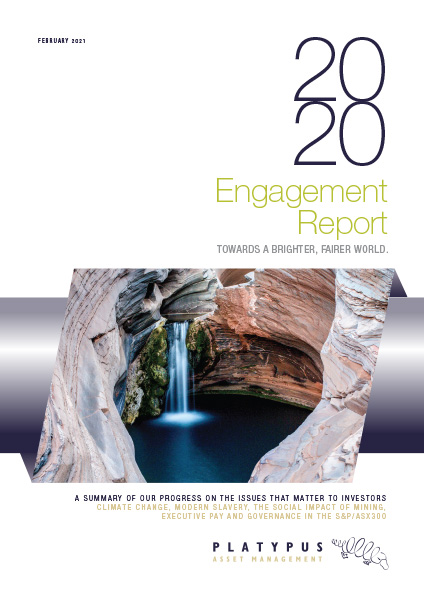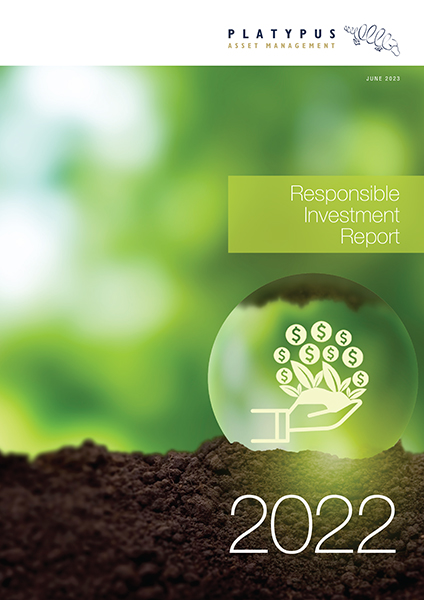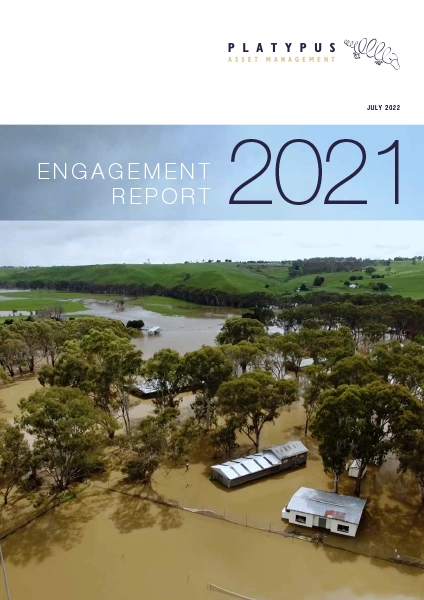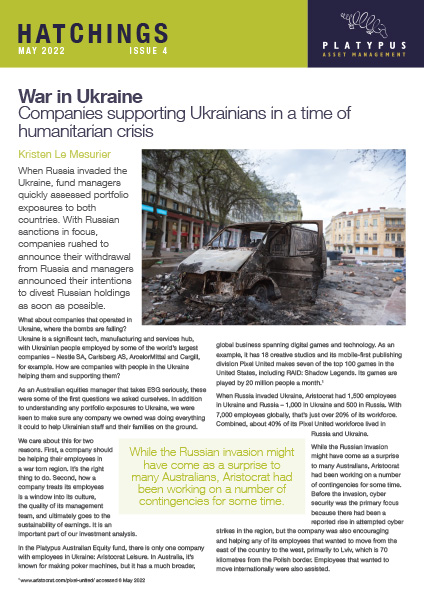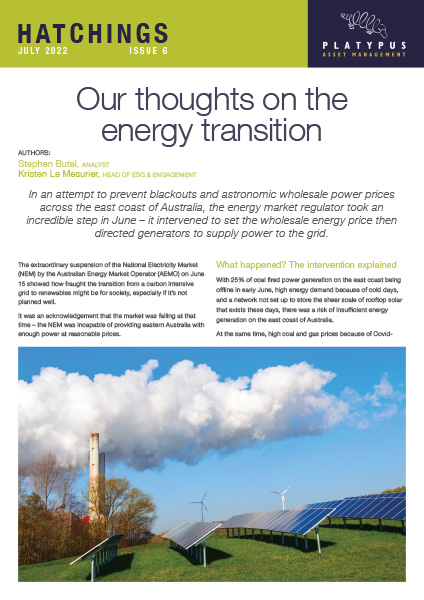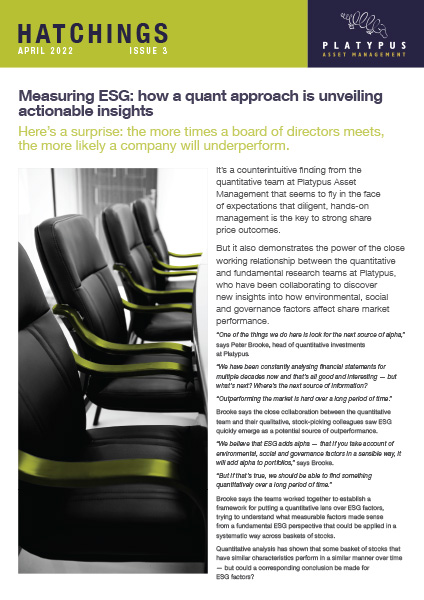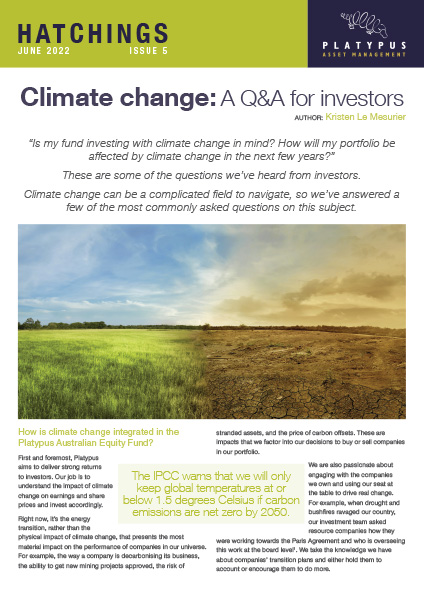Responsible Investing
ESG integration and Active Stewardship form the foundations of our approach to Responsible Investment. We have been a signatory to the Principles for Responsible Investment (PRI) since 2017.

Our Approach to
Responsible Investment

ESG Integration
Our view is that integrating Environmental, Social and Governance factors in investment decisions can lead to better investment outcomes.
This is because ESG issues can materially impact earnings and valuations in companies and across sectors. We take a holistic approach to active investing where ESG factors are considered alongside financial issues when making investment decisions. This entails considering a broad range of risks and value drivers as part of the investment decision-making process, many of which are intangible. Consideration of material ESG issues therefore contributes towards risk mitigation and buy and sell decisions. Material ESG issues which we view as having the potential to negatively impact earnings or valuations are factored into our investment decision making and form an integral part of our fundamental investment analysis, with an ESG stock assessment carried out before the stock is bought for the portfolio. Likewise, where material ESG issues likely to have an effect on earnings or valuations are identified, these are factored into sell decisions.
We note that there is no predetermined view as to the degree to which labour standards or environmental, social or ethical considerations will be taken into account in the selection, retention or realisation of investments relating to fund investments.

Active Stewardship
As active owners and stewards of our clients’ capital, we are committed to advocating for more sustainable practices from the companies we invest in. ESG issues encapsulate the relationships between a company, its employees, the environment, and society. As active owners, we work to improve the performance of companies on ESG issues in areas where we can make a difference. Our stewardship approach includes proxy voting and a robust engagement agenda, informed by critical ESG focus areas for particular investee companies identified. Read more about our Responsible Investment approach here.

Industry Collaboration, Advocacy and Thought Leadership
We see value in leading and supporting initiatives and engagements through which we can effect meaningful change. As such, we are actively involved in several collaborative investor engagement groups. Read more about this in our most recent Engagement Report. In addition, we are passionate about contributing towards thought leadership. Read our Hatchings publications, where we delve into topical ESG issues. Read more about our Responsible Investment approach here.
Responsible Investment Publications
Reports
In-depth Analysis
Hatchings
Proxy Voting Reports

Commonly Asked Questions
What are Scope 1, 2 and 3 emissions?
A company’s carbon emissions are categorised in three buckets – Scope 1, Scope 2 and Scope 3. This has become the global standard for reporting emissions globally.
SCOPE 1 These are the greenhouse gas emissions that a company makes directly — for example while digging up coal (for a coal miner), making a t-shirt (apparel manufacturer), operating its planes (airline).
SCOPE 2 These are the emissions a company makes indirectly by running its business, for example, the emissions in the electricity bought to run the business.
SCOPE 3 These are the emissions a company is responsible for, up and down its supply chain. These are typically significant in number. For an iron ore miner, Scope 3 emissions are the emissions produced by its customer making steel with the iron ore.
It is Scope 3 emissions that are typically the most challenging to reduce because a company doesn’t control those emissions. Having said that, companies can work with customers to achieve emission reductions if they are large enough.
Does climate change affect the way you invest?
Yes but exactly how depends on the fund.
Across all of our funds, returns are our primary objective. This is our investment objective.
In our active strategies, our job is to understand the impact of climate change on earnings and share prices and invest accordingly. Right now, in our Australian Equity Fund, it’s the energy transition and the way companies are decarbonising their businesses that we spend the most time analyzing. Other issues we consider include the risk of stranded assets and the price of carbon offsets. These are impacts that we factor into our decisions to buy or sell companies in our portfolio.
We are also passionate about engaging with the companies we own and using our seat at the table to drive real change. We take the knowledge we have about companies’ transition plans and either hold them to account or encourage them to do more. We do this work across all of our funds.
What is a carbon footprint and is this something you measure?
Strictly speaking, a carbon footprint is the total emissions brought about by a person or company. In an investment context, a carbon footprint typically refers to a company’s Scope 1 and 2 emissions divided by revenue (revenue is a proxy for company size). The term for this type of carbon footprint is carbon intensity.
We calculate the carbon intensity of companies we invest in. We also calculate the carbon footprint of our investment portfolios. We then consider the portfolio’s carbon footprint against the appropriate benchmark. For the Platypus Australian Equity Fund, the benchmark is the S&P/ASX 300.
What is net zero referring to?
Net zero is a reference to the need to completely decarbonise our world by 2050, with any carbon that is still emitted by 2050 being offset (hence the “net” in net zero). This comes from the United Nations Intergovernmental Panel on Climate Change, which states that if temperature rises are not kept to a maximum of 1.5 degrees Celsius later this Century, the world faces dangerous climate change.
The IPCC warns that we will only keep global temperatures at or below 1.5 degrees Celsius if carbon emissions are net zero by 2050.
What does engagement actually mean?
As active owners, we work to improve the performance of companies on environmental and social issues in areas where we can make a difference. We do this because engaging with companies on ESG issues can lead to better investment outcomes and we have an opportunity to encourage companies to do better on environmental and social issues on our clients’ behalf.
We typically carry out our engagement work by meeting companies one-on-one. Who we meet with at these companies depends on the issue, how long we’ve been engaging on the issue, and whether we need to escalate the issue to the C-suite or the board. Remuneration-related or governance issues are typically only raised with the board.
We have two key engagement streams:
1. Company-specific engagement where we identify opportunities to improve ESG practices in our investee companies.
2. Thematic engagement where we seek to tackle significant industry-wide ESG issues to drive change such as climate change and modern slavery, often with other investors in collective engagement groups.
Company-specific engagement work might aim to improve a company’s executive pay practices, its treatment of customers or employees or its carbon emissions targets while our thematic engagement work focuses on a systemic issue like climate change and seeks to drive change at the company level.
You can read more about the engagement work we do in our annual engagement report.
What is your voting record?
We are committed to being as transparent as we can around our ESG activities including the way we vote at company meetings on our clients’ behalf.
We publish our voting statistics every year in our engagement report.
Do you have an ESG policy?
Yes we do. It can be viewed here.


